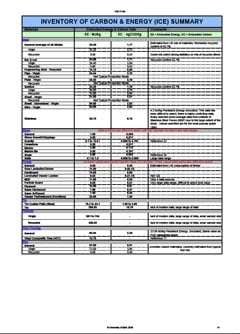A new version of the Inventory of Carbon & Energy (ICE) database produced by the University of Bath is promised this month (January).
The database compares the environmental impacts of different construction products and shows how ecologically friendly stone is compared with other products.
The new ICE database, like its predecessor, will be available as an Excel file that can be downloaded free (click here to go to the download area of the website).
There is also a £60 (£30 to members) guide available as a hard copy and PDF from BSRIA. It contains simple worked examples and seven case studies from companies that have used the ICE database. It can be ordered on-line from BSRIA. Click here to go to the website or click on the web address below to go to the BSRIA on-line bookshop.
The technical guide from BSRIA follows the Low Carbon Construction Innovation & Growth Team (IGT) report published in November and gives an account of why it is necessary to measure embodied carbon in construction.The IGT report, edited by Chief Construction Advisor Paul Morrell, recommends:
- The Treasury should introduce a requirement to conduct whole life (embodied and operational) carbon appraisal into feasibility studies
- The Industry should agree with government a standard method of measuring embodied carbon
The BSRIA ICE guide, produced in conjunction with the University of Bath, supports these recommendations and aims to fulfill two objectives:
- to provide the industry with the necessary data – there are 1,800 records of embodied carbon for 35 classes of material – in a way that is readily usable in calculations
- to focus on how the construction industry can incorporate an evaluation of embodied carbon into the design process. Case studies are used to demonstrate how embodied carbon can be calculated and hence enable informed choices about materials selection.
The ICE inventory has been collated from independent sources and open literature and has been rigorously analysed to give users confidence in the reliability of the values.
Dr Phillip Lee, Member of the Select Committee for Energy and Climate Change 2010, states: “We are all very familiar with the targets for reducing carbon. Another important factor in the climate change argument that we must take into account is the carbon in materials used in construction. The report provides a lot of data and points you to lots more.
“This report is a welcome contribution to the development of this knowledge.”

